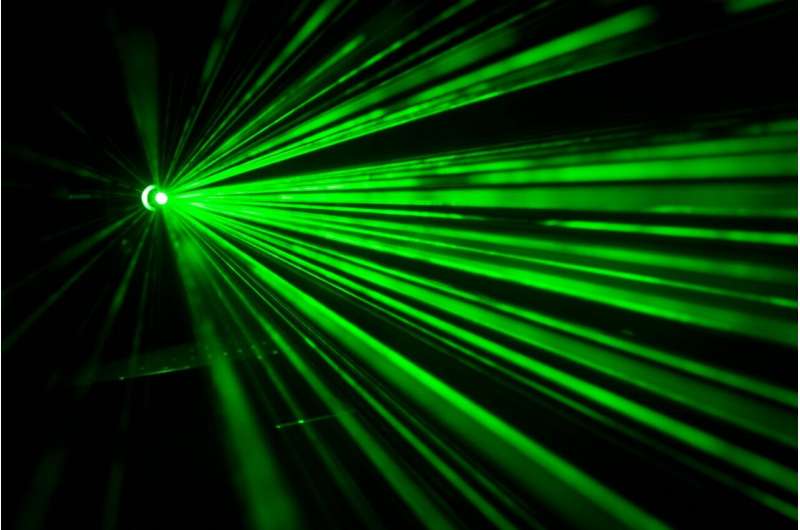Putting photons in jail

A miniature prison for photons—that is the nanocavity discovered by scientists of the University of Twente. It is an extremely small cavity surrounded by an optical crystal, a structure of pores etched in two perpendicular directions. Confining photons in this 3-D cavity may lead to tiny and efficient lasers and LEDs, storage of information or ultrasensitive light sensors. The results are published in Physical Review B, one of the journals of the American Physical Society.
Techniques for trapping light are at the basics of photonics. A well-known cavity consists of two mirrors between which a standing wave will be formed of a certain colour of light, depending on the distance between the mirrors. This is the working principle of a laser. But light that is leaking sideways will never be reflected again. Is it possible to trap a photon inside a three-dimensional 'prison cell' surrounded by mirrors? It is indeed, the UT researchers now demonstrate. The mirrors, in this case, are formed by a three-dimensional photonic crystal, consisting of pores that have been etched deeply into silicon in two directions, perpendicular to each other.
Photonic crystal are known for their very special light properties. The structure and periodicity of the pores allow only light of certain wavelengths to propagate inside the crystal. But how do you create a cavity for trapping a photon in a structure like this? In their new paper, the UT researchers show that this is possible by deliberately changing the diameter of two pores. At their crossing point, an irregularity or defect forms inside the crystal. This tiny cavity is surrounded by the periodic crystal structure, forcing the photon back into the cavity. There simply is no escape. "Our calculations show that in this tiny volume of the cavity, the optical energy is enhanced by up to 2,400 times compared to the outside of the crystal. This is a very large enhancement, given the small dimensions," says Dr. Devashish, the lead author of the paper.
Lightweight
By altering the periodic structure locally, the crystal also shows considerable absorption of visible light, up to ten times the absorption of bulk silicon. "This strong absorption, in a very tiny volume, is a great property for new sensors. Thanks to the high density of pores, the crystal is very lightweight – we also call this 'holeyness'", Prof Willem Vos says. He is the Complex Photonics Systems group leader at UT's MESA+ Institute.
In earlier publications, the group showed that diamant-like photonic crystals can reflect a very broad range of colours of light for all angles: these results led to the new discovery now presented. In the coming generations of photonic integrated circuits (PICs), the nanocavities are expected to play a major role in the treatment of optical signals, in information storage or quantum photonic devices.
The research was done by the Complex Photonic Systems group, together with the Mathematics of Computational Science group, both of UT's MESA+ Institute.
The paper "Three-dimensional photonic band gap cavity with finite support: enhanced energy density and optical absorption" appeared in Physical Review B, February 2019 edition.
More information: D. Devashish et al. Three-dimensional photonic band gap cavity with finite support: Enhanced energy density and optical absorption, Physical Review B (2019). DOI: 10.1103/PhysRevB.99.075112
Journal information: Physical Review B
Provided by University of Twente





















